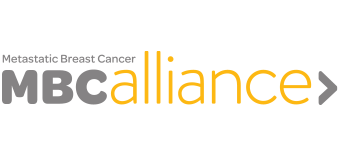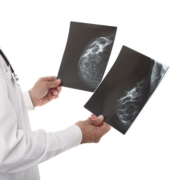My first mammogram was also my last mammogram | Katherine O’Brien
I got my first, and last, mammogram in July 2009; I was 43 years old. I chose that date and time because layoffs were imminent at my company, so, although I had no health complaints, I was catching up on overdue appointments. All was going well with my general physical. But then the nurse practitioner felt a hard spot on my breast. She gave me a prescription for a diagnostic mammogram, which is different from a routine screening mammogram. Anyone who is told to get a diagnostic mammogram should most definitely do so!
The day I had my diagnostic mammogram was the day I found out I definitely had breast cancer. “This is NOT a cyst,” the radiologist told me. “You have to see a surgeon.” In preparation for a mastectomy, the surgeon ordered a round of imaging tests (PET/ CT [positron-emission tomography.computed tomography], MRI [magnetic resonance imaging], and bone scan). I then learned I had metastatic, or stage IV, breast cancer. My breast cancer had already spread to my spine when it was found.
Because of the characteristics of my breast cancer(ER/PR+ and HER2. [estrogen- and progesterone-receptor positive, HER2 negative], the most common type), I was able to start on the very lowest end of the toxic-drug spectrum. Eventually I will have to have chemo (and again, I will always be in treatment) but hopefully that won’t be soon.
Had I to do things over, I would have been proactive about getting a mammogram at age 40—and possibly sooner if my doctor had recommended it. My mom died of metastatic breast cancer at age 53. I am also of Ashkenazi Jewish descent—people of Eastern European Jewish heritage have an increased risk for breast and ovarian cancers.
Early detection is not a breast cancer cure. Most of the 155,000 people in the US currently living with metastatic breast cancer were originally treated for early stage breast cancer—their cancer came back 5, 10, 15, and even 17 years later—even though they took excellent care of themselves and had regular mammograms. It is very unusual for someone to be like me– diagnosed with metastatic breast cancer from the very start— this only happens 10% of the time.
No one dies from early stage breast cancer—a lump in the breast is not what kills. When cancer spreads beyond the breast—to bone, liver, lung, brain, or some combination thereof, it can no longer be cured. Obviously, it is better to find breast cancer before it can spread. We don’t know which cancers seen on a mammogram would go on to spread and which would never do anything. So everything that is seen on a mammogram must be treated. It would be wrong to say that mammography doesn’t save lives. But, as one prominent oncologist put it, we need to use mammography with caution, explain its limitations, and realize that we need a better test.



